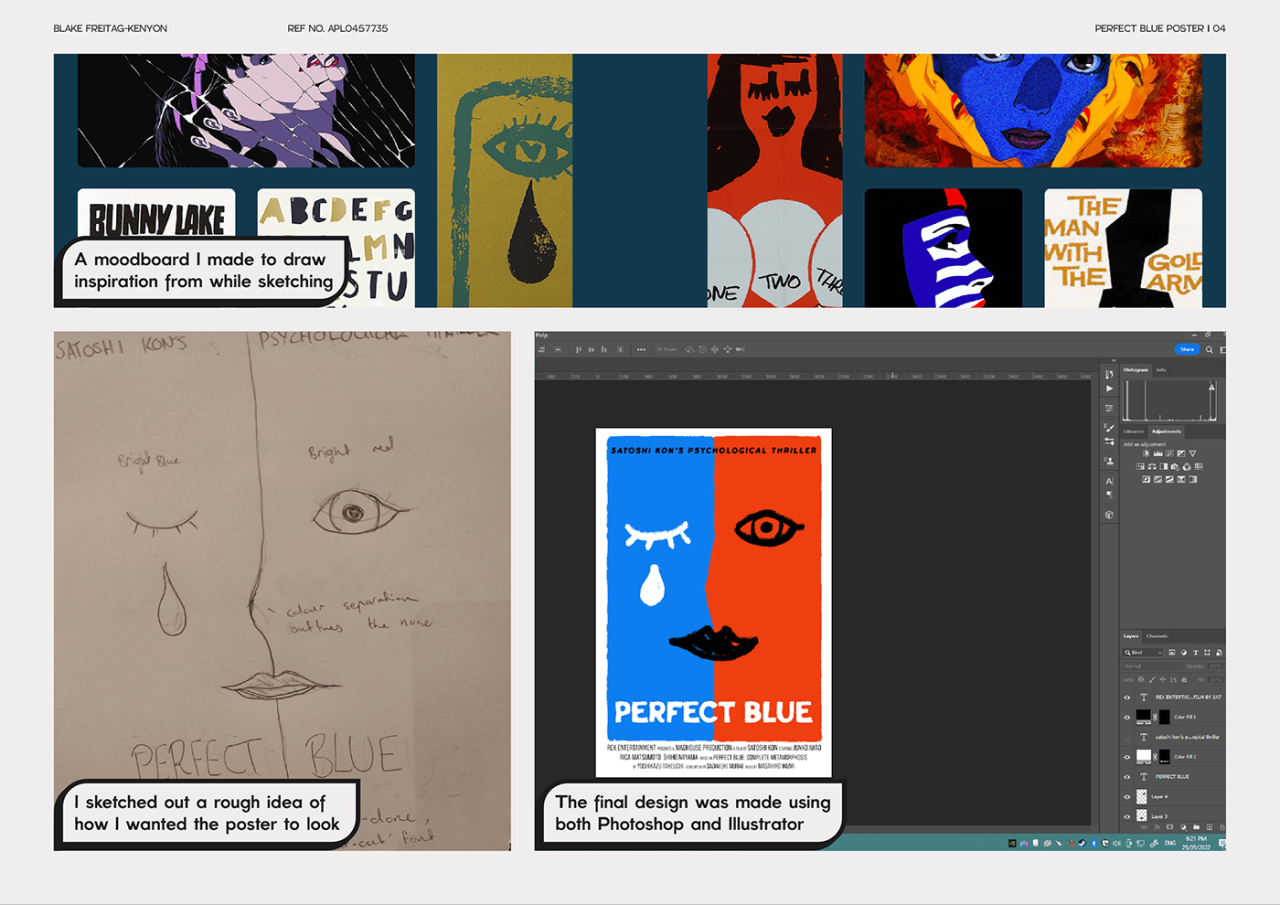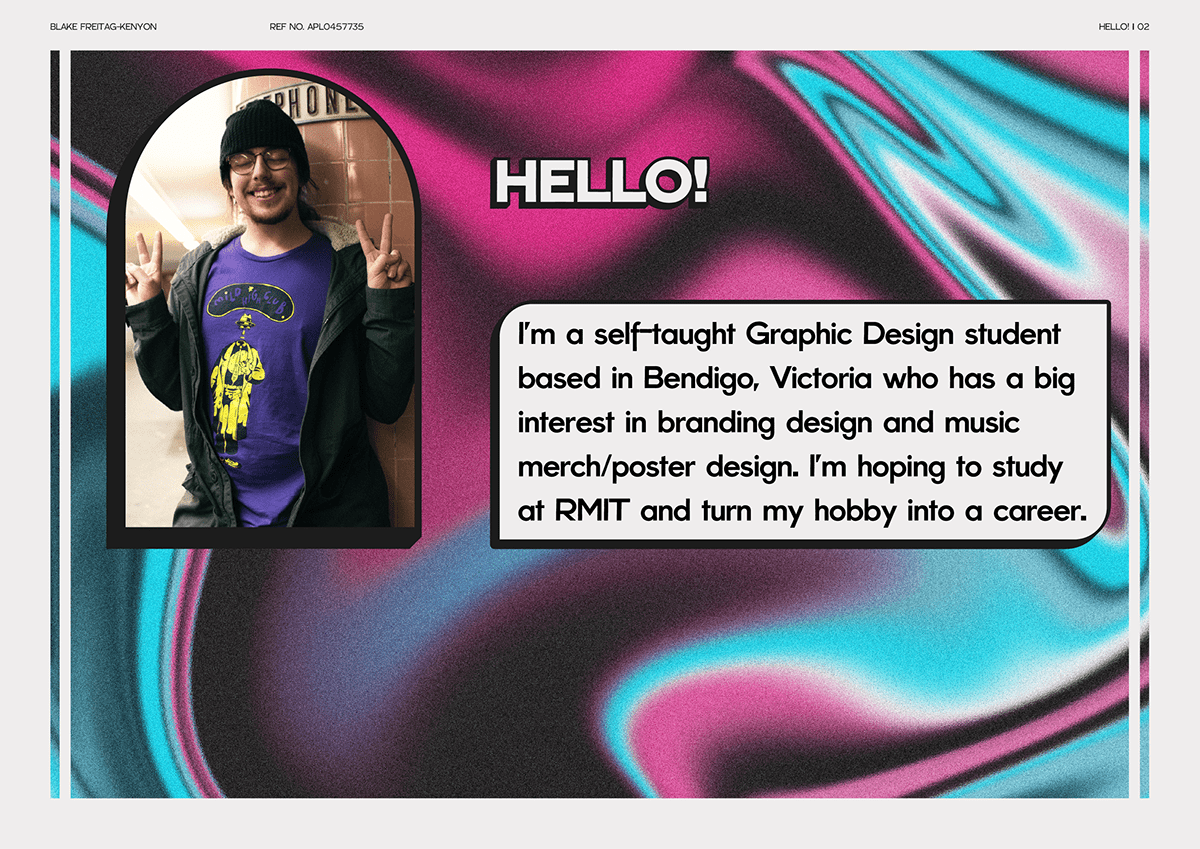Building a strong university portfolio for admissions is crucial for securing a place at your dream institution. It’s not just about grades; it’s about showcasing your unique strengths, passions, and achievements that demonstrate your potential for academic success and beyond.
Universities are increasingly looking for well-rounded applicants who excel in academics, extracurriculars, and personal qualities. A strong portfolio allows you to tell your story, highlighting your accomplishments, experiences, and aspirations in a compelling and organized manner. From academic excellence to impactful extracurricular activities, this guide provides a comprehensive framework for building a portfolio that stands out from the competition.
Understanding University Admissions
Gaining admission to a top university is a highly competitive process, requiring a strong application that showcases your academic achievements, extracurricular involvement, and personal qualities. A well-crafted portfolio plays a crucial role in demonstrating your suitability for the program and setting you apart from other applicants.
A university portfolio serves as a comprehensive collection of materials that highlights your strengths, accomplishments, and potential. It allows admissions committees to gain a deeper understanding of your academic capabilities, interests, and aspirations. A strong portfolio is essential for making a compelling case for your admission and increasing your chances of securing a place at your desired institution.
Types of Portfolios
Universities often accept a variety of portfolio formats, depending on the specific program and their admission criteria. Common types of portfolios include:
- Academic Portfolio:This type of portfolio focuses on your academic achievements, such as transcripts, standardized test scores (e.g., SAT, ACT), and awards or honors received. It showcases your academic prowess and commitment to learning.
- Creative Portfolio:For programs in art, design, music, or other creative fields, a creative portfolio is essential. It may include samples of your work, such as paintings, sculptures, photographs, musical compositions, or design projects.
- Research Portfolio:Students applying to research-intensive programs may need to submit a research portfolio. This portfolio demonstrates your research experience, including publications, presentations, and research proposals.
- Personal Portfolio:This portfolio goes beyond academic and professional achievements and showcases your personal interests, skills, and experiences. It may include essays, letters of recommendation, volunteer work, leadership roles, and personal projects.
Factors Considered in Portfolio Evaluation
Admissions committees evaluate portfolios based on various factors, including:
- Academic Excellence:Strong academic performance, as demonstrated by high grades, standardized test scores, and honors, is a key factor in portfolio evaluation.
- Extracurricular Involvement:Universities value students who are actively engaged in extracurricular activities, such as clubs, sports, community service, or leadership roles. This demonstrates your commitment to personal growth and well-rounded development.
- Personal Qualities:Your portfolio should highlight your personal qualities, such as leadership, communication skills, teamwork, and resilience. Admissions committees look for students who possess the qualities necessary to succeed in their program and contribute to the university community.
- Fit with the Program:Your portfolio should demonstrate a clear understanding of the program and your reasons for applying. It should highlight your specific interests and how they align with the program’s curriculum and research opportunities.
- Potential for Success:Admissions committees want to ensure that applicants have the potential to succeed in their program. Your portfolio should showcase your abilities, skills, and motivation, indicating your readiness for the challenges of university life.
Academic Excellence

Academic excellence is the cornerstone of a strong university portfolio. It demonstrates your commitment to learning, your intellectual capabilities, and your ability to thrive in a challenging academic environment. Universities are looking for students who have a proven track record of success in their studies, and a strong academic portfolio is essential for showcasing this.
Academic Performance
Your academic transcripts are a primary indicator of your academic achievements. Universities will closely examine your grades, course selection, and overall academic performance. * Grade Point Average (GPA):Your GPA is a numerical representation of your overall academic performance. A high GPA demonstrates consistent effort and success in your coursework.
Course Selection
Universities are interested in seeing that you have challenged yourself academically. Choosing challenging courses, particularly in your chosen field of study, shows your commitment to academic rigor.
Academic Honors and Awards
Receiving academic honors or awards, such as Dean’s List, President’s List, or scholarships, signifies exceptional academic performance and distinguishes you from your peers.
Demonstrating Academic Rigor
Beyond grades, universities are also looking for evidence of academic engagement and intellectual curiosity. * Coursework beyond Requirements:Taking advanced courses, independent study projects, or pursuing research opportunities demonstrates a thirst for knowledge and a willingness to go beyond the minimum requirements.
Participation in Academic Competitions
Participating in academic competitions, such as science fairs, debate tournaments, or essay contests, showcases your intellectual abilities and your commitment to applying your knowledge in real-world settings.
Academic Leadership
Holding leadership positions in academic clubs or organizations, such as student government, science clubs, or honor societies, demonstrates your ability to take initiative, work collaboratively, and contribute to the academic community.
Academic Engagement
Engaging with your academic pursuits beyond the classroom is crucial for building a strong portfolio. * Research Experiences:Participating in research projects, either independently or with faculty mentors, allows you to gain hands-on experience in your field of interest and develop valuable research skills.
Academic Presentations
Presenting your research findings at conferences, symposia, or even school events demonstrates your ability to communicate complex ideas effectively.
Academic Publications
Publishing your research findings in academic journals or online platforms showcases your intellectual depth and your ability to contribute to the advancement of knowledge.
Extracurricular Activities

Admissions committees value well-rounded individuals who demonstrate a passion for learning beyond the classroom. Extracurricular activities offer a platform to explore interests, develop skills, and showcase your commitment to personal growth. By actively engaging in activities outside academics, you can enhance your university application portfolio and demonstrate your potential as a valuable addition to the university community.
Building a strong university portfolio for admissions requires more than just academic excellence. Demonstrating extracurricular involvement and leadership skills is crucial, and understanding the challenges and opportunities that await in the first year can further enhance your application. To gain insights into the realities of university life, consider exploring resources like Preparing for university: what to expect in your first year , which can help you craft a compelling narrative about your preparedness and readiness for higher education.
The Importance of Extracurricular Activities
Extracurricular activities are more than just hobbies; they are opportunities to develop essential skills and demonstrate your commitment to personal growth. Universities seek applicants who are not only academically strong but also possess a well-rounded skillset and a desire to contribute to the community.
Participation in extracurricular activities showcases these qualities and helps you stand out from other applicants.
Types of Extracurricular Activities
A diverse range of extracurricular activities can enhance your university portfolio. Here are some examples:
- Leadership Roles:Taking on leadership roles in clubs, organizations, or volunteer groups demonstrates your ability to motivate others, manage projects, and make decisions. Examples include serving as president, treasurer, or team captain.
- Teamwork and Collaboration:Participating in team sports, group projects, or ensemble performances demonstrates your ability to work effectively with others, communicate clearly, and achieve common goals.
- Volunteer Work:Engaging in community service activities showcases your compassion, empathy, and commitment to making a positive impact. Examples include volunteering at local shelters, hospitals, or environmental organizations.
- Academic Clubs and Organizations:Joining clubs related to your academic interests demonstrates your passion for learning and intellectual curiosity. Examples include science clubs, debate teams, or history societies.
- Arts and Creativity:Engaging in creative pursuits such as music, dance, theater, or visual arts demonstrates your artistic talent, self-expression, and ability to think outside the box.
- Hobbies and Interests:Pursuing hobbies that align with your passions can demonstrate your dedication, perseverance, and ability to manage your time effectively. Examples include playing an instrument, writing, or collecting stamps.
Demonstrating Leadership, Teamwork, and Commitment
Extracurricular activities provide opportunities to demonstrate leadership, teamwork, and commitment in various ways:
- Leadership Roles:Taking on leadership positions within clubs, organizations, or volunteer groups allows you to showcase your ability to motivate others, manage projects, and make decisions.
- Teamwork and Collaboration:Participating in team sports, group projects, or ensemble performances demonstrates your ability to work effectively with others, communicate clearly, and achieve common goals.
- Commitment and Dedication:Consistent participation in extracurricular activities over an extended period shows your commitment to personal growth and your willingness to dedicate time and effort to activities that are important to you.
Impactful Extracurricular Experiences, Building a strong university portfolio for admissions
Here are some examples of impactful extracurricular experiences that can enhance your university portfolio:
- Organizing a fundraiser for a local charity:This demonstrates your leadership, organizational skills, and commitment to making a difference in your community.
- Leading a team to victory in a regional competition:This showcases your teamwork, strategic thinking, and ability to perform under pressure.
- Volunteering at a hospital for a year:This demonstrates your compassion, empathy, and dedication to serving others.
- Publishing an article in a student journal:This highlights your academic interests, research skills, and ability to communicate complex ideas effectively.
- Winning an award for your artistic talent:This showcases your creativity, dedication, and ability to excel in a challenging field.
Personal Statement and Letters of Recommendation
The personal statement and letters of recommendation are crucial components of a strong university application. These documents provide admissions committees with a deeper understanding of your academic achievements, personal qualities, and aspirations. They allow you to showcase your unique voice and demonstrate your commitment to higher education.
Crafting a Compelling Personal Statement
The personal statement is your opportunity to tell your story and connect with the admissions committee on a personal level. It should be a well-written, engaging essay that highlights your unique qualities, experiences, and aspirations. Here are some key elements to consider when crafting your personal statement:
- Define Your Narrative:Identify the central theme or message you want to convey. What are your key strengths, passions, or experiences that set you apart? What are your goals for the future, and how will attending this university help you achieve them?
- Showcase Your Voice:Write in your own authentic voice. Don’t try to sound like someone else or use overly formal language. Be genuine, passionate, and articulate your thoughts and experiences clearly.
- Highlight Personal Growth:Reflect on your experiences and how they have shaped your values, perspectives, and goals. Discuss any challenges you have faced and how you have overcome them. This demonstrates your resilience, adaptability, and growth mindset.
- Connect to Your Aspirations:Clearly articulate your academic and career aspirations and how attending this university will help you achieve them. Research the university’s programs, faculty, and resources to demonstrate your genuine interest and alignment with their offerings.
- Proofread Carefully:Ensure your statement is free of grammatical errors, typos, and inconsistencies. Have trusted individuals, such as teachers, mentors, or family members, review your work for clarity and impact.
Examples of Strong Personal Statements
- Example 1:A student passionate about environmental science might write about their experience volunteering at a local nature preserve, highlighting their commitment to sustainability and their desire to pursue research in the field. They could then connect this passion to the university’s renowned environmental science program and its focus on conservation efforts.
- Example 2:A student interested in music composition could discuss their journey as a musician, highlighting their growth as a composer and their desire to study with renowned faculty in the university’s music department. They could then showcase their creative potential and their dedication to their craft.
Importance of Strong Letters of Recommendation
Letters of recommendation provide an external perspective on your abilities and potential. They are written by individuals who know you well, such as teachers, mentors, or employers, and can provide valuable insights into your character, work ethic, and academic performance.
- Provide Context:Letters of recommendation offer a different perspective on your qualifications, providing context to your academic record and personal statement. They can highlight your strengths, achievements, and potential in ways that you might not be able to articulate yourself.
- Validate Your Strengths:They serve as a validation of your skills and abilities, offering a third-party perspective on your character and work ethic. They can strengthen your application by providing evidence of your accomplishments and potential for success.
- Demonstrate Your Relationships:Strong letters of recommendation demonstrate your ability to build positive relationships with mentors and educators. They show that you are respected, engaged, and valued by those who know you well.
Portfolio Presentation and Organization
A well-structured and visually appealing portfolio is essential for effectively showcasing your achievements and experiences to university admissions committees. It should be organized in a way that highlights your strengths and makes it easy for reviewers to navigate and understand your qualifications.
Portfolio Structure
The structure of your portfolio should be logical and easy to follow. Consider these key elements:
- Cover Letter:A brief and compelling introduction to your portfolio, outlining your academic and extracurricular achievements, and highlighting your interests and goals.
- Academic Transcript:This is the most important document in your portfolio, showcasing your academic performance.
- Extracurricular Activities:A detailed description of your involvement in extracurricular activities, including leadership roles, contributions, and skills developed.
- Personal Statement:A well-written essay that reflects your personality, motivations, and aspirations.
- Letters of Recommendation:Letters from teachers, mentors, or employers who can attest to your character, abilities, and potential.
- Work Experience:If applicable, include details about any relevant work experience, including responsibilities and skills acquired.
- Awards and Honors:List any awards, honors, or recognition you have received.
- Projects and Portfolios:If you have any creative projects or portfolios, such as writing samples, artwork, or research papers, include them.
Portfolio Formats
- Digital Portfolio:A website or online platform allows you to showcase your achievements in a visually appealing and interactive format.
- PDF Document:A PDF document is a versatile format that can be easily shared and viewed on different devices.
- Physical Portfolio:A physical portfolio can be a more traditional option, allowing you to present your materials in a professional and tangible way.
Proofreading and Editing
Once you have compiled your portfolio, it is crucial to proofread and edit it carefully. Errors in grammar, spelling, or formatting can detract from your overall presentation. Consider these tips:
- Read your portfolio aloud:This can help you catch any errors that you might miss when reading silently.
- Ask a friend or mentor to review your work:A fresh perspective can help you identify any areas that need improvement.
- Use a grammar and spell checker:While not a substitute for careful proofreading, these tools can help you catch common errors.
Portfolio Building Strategies: Building A Strong University Portfolio For Admissions

A well-crafted university portfolio is a compelling narrative that showcases your academic achievements, extracurricular involvement, and personal qualities. It provides admissions committees with a comprehensive understanding of your strengths, interests, and potential. Building a strong portfolio requires strategic planning, careful documentation, and effective presentation.
Identifying and Documenting Relevant Achievements and Experiences
Documenting your achievements and experiences is crucial for creating a compelling portfolio. This process involves reflecting on your accomplishments, identifying relevant skills and qualities, and presenting them in a clear and concise manner.
- Academic Excellence:Highlight your academic performance by providing transcripts, standardized test scores (SAT, ACT), and awards received. Include details about challenging coursework, research projects, and academic honors. For example, if you earned a perfect score on an AP exam or received a prestigious academic award, document these achievements and their significance.
- Extracurricular Activities:Showcase your involvement in clubs, sports, volunteer work, and other extracurricular activities. Describe your roles, responsibilities, and contributions. Quantify your impact whenever possible. For example, if you led a fundraising campaign that raised a significant amount of money, quantify your success by stating the amount raised and the impact it had on the organization.
- Personal Projects and Interests:Highlight personal projects, hobbies, or interests that demonstrate your passion, creativity, and problem-solving skills. For example, if you developed a website or created a piece of art, showcase these projects and describe the process, challenges, and lessons learned.
- Leadership and Teamwork:Document your leadership experiences in school, community organizations, or extracurricular activities. Describe your leadership style, the challenges you faced, and the outcomes you achieved. Include examples of teamwork and collaboration, highlighting your ability to work effectively with others.
- Work Experience:If you have relevant work experience, include details about your job responsibilities, skills acquired, and contributions to the company or organization. Quantify your impact whenever possible. For example, if you increased sales by a certain percentage or improved a process by a specific amount, highlight these accomplishments.
Last Recap
Creating a strong university portfolio is a journey that requires dedication, reflection, and strategic planning. By focusing on academic excellence, engaging in meaningful extracurricular activities, and crafting a compelling personal narrative, you can showcase your unique strengths and demonstrate your readiness for the challenges and opportunities that await you in higher education.
Remember, your portfolio is a reflection of your aspirations, your journey, and your potential. Make it count.
Frequently Asked Questions
What are some common mistakes students make when building their portfolios?
Common mistakes include neglecting to showcase their unique strengths, focusing solely on academic achievements, and failing to proofread their materials. It’s essential to present a well-rounded portfolio that reflects your personality and aspirations.
How long should my portfolio be?
There’s no set length, but it’s best to be concise and focus on showcasing your most impactful experiences and achievements. Aim for a portfolio that is easy to navigate and highlights your key strengths.
What if I don’t have a lot of extracurricular experience?
Focus on highlighting the experiences you do have, even if they seem small. Emphasize the skills you’ve developed and the lessons you’ve learned. Even personal projects or volunteer work can contribute to a strong portfolio.
Should I use a professional portfolio service?
While professional services can be helpful, they’re not necessary. You can create a strong portfolio yourself with careful planning and attention to detail. However, if you’re unsure about your presentation skills, seeking professional guidance can be beneficial.